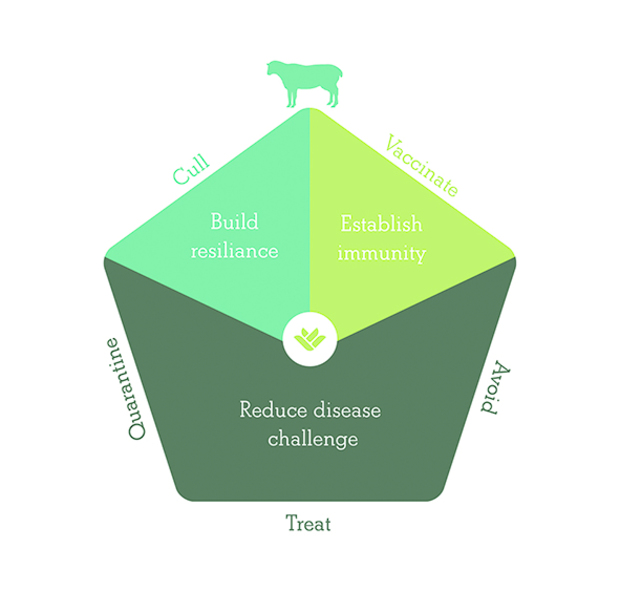Resist the urge to trim

Independent research clearly shows that foot trimming is not an effective treatment for sheep lameness. Up-to-date advice is to put those shears away.
Avoid foot trimming sheep
Vets are now urging sheep farmers to stop foot trimming to treat lameness in their flocks following a University of Warwick study carried out on more than 50 lame sheep on a commercial farm in England¹. Instead, producers should catch and treat any lame sheep with an appropriate injectable antibiotic and topical spray within three days of becoming lame.
In the independent study, the Warwick researchers administered four different treatment protocols and assessed their effectiveness five days later. Injection of an antibiotic in combination with a topical spray was found to be the most effective approach with 70% of the lame sheep recovering after this treatment regime. The traditional method of foot trimming and administering a topical spray – a long standing accepted farm procedure since the 1980s – only reduced lameness by 10%.
Moreover, the research team found that foot trimming can actually cause lameness. This is because trimming can result in the horn being removed too far, exposing sensitive tissue that is painful for the sheep to walk on and leaving it vulnerable to re-infection. A study has also shown that the foot shears themselves can transmit bugs and sometimes even after they have been disinfected².
Speaking at an Animal Welfare Foundation discussion forum in London in June, research team leader Laura Green said:
“If we treat sheep correctly within three days of becoming lame then not only do they recover without any reduction in productivity, they also stop transmitting the bacterial infection.” She added that highly effective, targeted treatment in this way will also help farmers to use less antibiotics in the long term.
Reducing lameness in sheep
Independent sheep vet Fiona Lovatt from Flock Health Limited says that this now industry accepted treatment advice – implemented as part of the widespread adoption of the Five Point sheep lameness reduction plan – should help the sheep industry meet the Farm Animal Welfare Council target of reducing lameness prevalence in UK flocks to less than 2%.
“Foot trimming is not a treatment for lameness – it is a cosmetic procedure and should be resisted. The important message is to treat any lame sheep quickly and effectively, but it is also important to implement a long-term management plan geared around disease prevention including vaccination.
“Many UK sheep producers are cutting the costs of flock lameness by implementing the Five-Point Plan, which includes prompt antibiotic treatment of any affected sheep, rigorous culling, good quarantine procedures for any incoming sheep and an investment in vaccination. Vaccination should be timed to coincide with times of high disease risk on the farm. Computer modelling shows a cost benefit for whole flock vaccination if lameness incidence due to footrot is more than 2% of the flock³.
The Five Point Plan

“This proven lameness reduction plan builds flock resilience to disease, reduces the infection challenge on the farm and establishes immunity. The outcome is a significant reduction in the number of lame sheep on the farm, which results in increased flock profitability,” Dr Lovatt says.
For advice on how to implement the Five Point Plan in your flock, contact your vet.
References:
- Kaler J., Daniels S.L., Wright J.L., and Green L.E. (2010). Randomised clinical trial of long-acting oxytetracycline, foot trimming and flunixine meglumine on time to recovery in sheep with footrot. Journal of Veterinary Internal Medicine 24, 420-425.
- Winter J.R., and Green L.E. Cost benefit analysis for ewes lame with footrot. The Veterinary Journal 220 (2017) 1-6.
- University of Reading Footrot Cost Model.